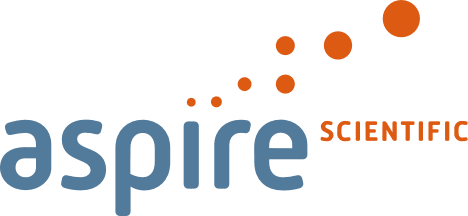The 20th Annual Meeting of the International Society for Medical Publication Professionals (ISMPP) took place once again in Washington, DC, from 29 April – 1 May with the theme ‘Storytelling: Its Art and Power’. Incorporating stories into medical publications can clarify complex ideas, build empathy, and establish trust, ultimately dispelling stigmas and misinformation. Over 700 attendees discovered the power of storytelling to unlock greater understanding in medical communications.
A summary of the second day of the meeting is provided below to benefit those who were unable to attend the meeting, and as a timely reminder of the key topics covered for those who did.
Summaries of Day 2
Keynote: From numbers to narrative: a story in 5 parts
KEY TAKEAWAY
- Effective data visualisation makes data understandable and memorable.
Jenny Ghith (Pfizer) opened Day 2 by reading an artificial intelligence (AI)-generated poem, before introducing keynote speaker, Bill Shander, an information designer who helps turn data into compelling visuals through interactive experiences and storytelling. Shander started his presentation by showing an effective example of data visualisation, taken from The New York Times, explaining how the purpose of data visualisation is to make data understandable and memorable, even when the data are complex. He explored this concept further in 5 parts.
Part 1: data literacy
Data literacy is the ability to think about and use data. Numbers are meaningless without context, and it is therefore necessary to think critically before using data, by asking questions such as “Why am I doing this?” and “Why am I doing this in this way?” (something that Shander calls “useful paranoia”). It is also crucial to understand how data literate your audience is (or isn’t). A live poll of the audience revealed that approximately 70% of the attendees considered themselves to be data literate.
Part 2: storytelling
Shander went on to explain that after 50,000 years of evolution, human beings are “wired for stories”. Moreover, storytelling is an evolutionary imperative: we have to tell stories because stories are what people connect with.
Storytelling is an evolutionary imperative: we have to tell stories because stories are what people connect with.
The how of telling stories can be broken down into 3 ‘KWYs’ that help to set out the storytelling priorities:
- KWYDIS: Know What Your Data Is Saying
- KWYANTH: Know What Your Audience Needs To Hear
- KWYRWTS: Know What You Really Want To Say
Part 3: design thinking
Design thinking (ie, how to design) can be broken down into the following stages: empathise → design → ideate → prototype → test. Of these, the most important stages are empathy and testing: you first need to understand your audience, before creating a visual and testing whether it works.
Part 4: design/visualisation best practice
Most people are not trained in how to choose the most appropriate type of chart when presenting data, so the first step is to be clear about what you want your audience to see. Once this is decided, there are free tools available to help choose the best chart type for the job, such as those produced by the Financial Times. The most important thing is to be clear about what you want the chart to do. Effective design is all about information hierarchy (ie, “this is more important than that”). It is also important to be aware of pre-attentive processing: the way in which we subconsciously process visuals before actively paying them attention. To this end, design should be simplified to draw attention to the part that matters most, removing information that is not needed, and using annotation to improve understanding.
Design should be simplified to draw attention to the part that matters most, removing information that is not needed…
Part 5: examples
Shander ended by presenting more examples of effective data visualisation, explaining that the best data storytelling is currently being done in journalism (eg, by the graphics teams of The New York Times and Financial Times). He advocated following such examples when embarking on data visualisation. Other useful information and resources are available at billshander.com and What Data Visualization Books Should I Read?
AI MythBusters: how to counter misinformation in medical communications
KEY TAKEAWAY
- Generative AI will not replace medical writers as human input and subject matter expertise are needed to ensure accuracy in AI-generated outputs.
Todd Parker (MedThink SciCom), Dheepa Chari (Pfizer), Ken Truman (MedThink SciCom), and Tim Mackey (University of California San Diego, S-3 Research, JMIR Publications) led an engaging panel session on the current state and future trends of AI in medical communications, covering common myths, misperceptions, and misinformation about AI, and approaches to adopting AI in medical communications.
Myth 1: generative AI will take my medical writing job
Generative AI has the potential to create content quickly and efficiently, particularly for repetitive content-generation tasks. However, it is a language-based, not knowledge-based model, and human input will always be required to provide context and scientific perspective. Pharma companies are exploring the use of generative AI to develop first drafts for different types of content followed by scientific context and editorial review steps. AI may elevate the medical writing function and allow writers to focus on other aspects of medical communications. An analogy is that Microsoft Excel and financial management software did not replace bookkeepers but freed their time to focus on the higher cognition and more creative aspects of the job.
Microsoft Excel and financial management software did not replace bookkeepers, but freed their time to focus on the higher cognition and more creative aspects of the job.
A live polling question found that most attendees considered the myth busted and the panel agreed, summarising that generative AI cannot replace the expertise or creative writing provided by medical writers who produce highly complex material, although medical writers using generative AI are more likely to replace those who do not.
Myth 2: generative AI can’t be trusted due to ‘hallucinations’ or bias
Generative AI models can be biased and are only as good as the training data. Hallucinations occur not due to ‘system bugs’ but by design, because AI models operate on probabilistic mechanisms, aiming to produce statistically plausible text. AI tools are powerful but not 100% accurate or reproducible, which emphasises the importance of managing expectations and applying verification steps.
Bias is inherent in the process of prompting, while internal validity of AI outputs is challenging if different answers are created by the same prompt. Furthermore, data within the AI models can be inherently biased, reflecting historical or social inequalities. Overall, data put into the system should be verified to ensure it is free of bias. Another challenge is the limited availability of training data from non-English language sources. A regulatory framework may need to be established for responsible prompt engineering.
A live polling question found that most attendees considered this myth plausible or confirmed.
AI tools are powerful but not 100% accurate or reproducible, which emphasises the importance of managing expectations and applying verification steps.
Myth 3: only those with deep technical expertise can craft the perfect prompts to achieve desired outcomes with AI
The ChatGPT user interface is very accessible and user friendly, but prompt engineering can be difficult and changes over time. Some prompt engineering experience is required to provide desired inputs and outputs. Crafting the right prompt requires a lot of time, practice, and patience. In addition, to check the quality and accuracy of the outputs, and to avoid misinformation, a level of knowledge is required via collaboration with interdisciplinary experts at different stages (eg, medical writers, medical directors, and data scientists).
Crafting the right prompt requires a lot of time, practice, and patience.
The widespread introduction of personal computers in the 1990s/2000s meant that people had to embrace and adapt to them in the workplace, and we are now dependent on this type of technology to function. The panel proposed that AI will be increasingly used and, over time, we will evolve and learn to create better outputs from generative AI.
While the panel considered this myth busted, a live polling question found that most attendees considered it to be plausible.
ISMPP Artificial Intelligence Task Force: removing barriers to confident AI use
KEY TAKEAWAY
- As AI use increases, education on its use is needed to build confidence and fully realise the benefits AI can bring.
Following the release of the ISMPP AI position statement in 2023, an ISMPP U webinar revealed there were still significant barriers to the use of AI. In this session, Jason Gardner (Real Chemistry), Matt Lewis (Inizio Medical), Monica Elmore (AbbVie), Keith Goldman (AbbVie), Sonja Krane (American Chemical Society Publications), and Jay Patel (Cactus Communications) explored these barriers and potential strategies to overcome them.
AI: where are we now?
Lewis summarised the state of the art, noting that everyday use of AI within the industry is increasing, particularly for certain tasks such as the development of plain language summaries (PLS). Lewis expects AI use to continue to increase, predicting that by the end of next year, AI would be factored into every major aspect of the scientific communications industry. Whereas the sentiment around AI in the past was fear, now there was a mix of scepticism but also acceptance, with many organisations actively embracing it.
What are the barriers to AI as a medical writer?
Elmore summarised the major barriers she has encountered in her work as a medical writer:
- Lack of quality materials to feed into AI: The available starting information may not be appropriate or sufficient to produce the output required.
- Lack of efficiency: As it takes time and skill to develop a prompt, the investment that goes into this process may not be worthwhile for niche projects, where the prompt is unlikely to be used elsewhere.
- Lack of trust: Due to AI hallucinations, effort is required to check the output to not only ensure that it is accurate but also that it aligns with strategy and author preference.
Strategies to overcome barriers
To overcome barriers in adopting AI, Goldman suggested involving AI sceptics early in the process, as once they can see how AI can work for them, they will encourage others to get on board. Allowing individuals to use external tools was also important to gain confidence, but appropriate guardrails should be set, such as only using publicly available data. Prompt engineering training was another way to build confidence, as was using appropriate metrics to show whether the tool was making the process faster, less expensive, or more accurate.
What are the considerations for companies thinking about adopting AI?
With the explosion of apps that are available for different AI solutions, Lewis encourages a healthy sense of curiosity and experimentation but recommends companies consider whether the proposed tools align strategically in terms of resource and appropriateness. The ever-evolving AI technology also raises security considerations, so constant interactions with IT, compliance, and/or governance partners is required.
What are the implications of AI for publishing?
Krane described that from a publisher’s perspective, maintaining the accuracy and integrity of published literature is the main concern, and that transparency around the use of AI is key. Copyright remains a complicated issue, as it is unclear whether the output from generative AI belongs to the AI provider or the user who enters the prompt, but she expects to see regulation addressing this aspect soon. With regards to the use of AI during the peer review process, Krane emphasised the importance of reviewers understanding the publisher-specific guidance as these can vary greatly.
How can we work within the industry to build confidence in AI?
Patel described how coordinating with other stakeholders, including authors, institutions, sponsors, publishers, and journals, to align AI policies will be important, as currently the guidance across sectors is inconsistent. Other suggested strategies for building confidence included educating authors and contributors on the use of AI, education on better prompting, providing evidence that these tools work as effectively as is suggested, and remaining diligent about reviewing outputs for accuracy.
Lewis closed the session by emphasising that the goal is now augmented intelligence, a human-centred partnership model of people and AI working together to enhance cognitive performance.
If we work along with AI, the benefits can be quite profound.
Beyond words: deploy art, science, and innovation into visual storytelling in scientific publications and medical communications
KEY TAKEAWAYS
- Storytelling is a powerful behavioural science tool for sharing new ideas and information.
- Visual storytelling increases impact and cuts through the noise – a powerful story is more likely to be interpreted by people in the same way.
In this session, Melanie Sobczyk (Novartis), James Duggan (Envision Pharma Group), and Oliver Brant (Envision Pharma Group) explored the influence of behavioural science in medical communications, and how visual storytelling can be used to amplify understanding and memorability, as well as improve the impact of publications and other materials.
Behavioural science behind storytelling
Humans are hardwired (both subconsciously and consciously) for storytelling. Stories in medical communications are generally used to raise awareness and knowledge and to change behaviour. The quality of the story and the interpretation by the audience are the most critical elements – an engaging story is more likely to achieve your objectives.
We ideally want the story to drive awareness or change, and subsequently lead to retention and the audience sharing the story with others.
Incorporating visual storytelling in medical communications
Recent physician surveys found that they are interested in learning about the latest trials, treatments, or procedures but are feeling overwhelmed with the amount of information they have to keep up with. Visual storytelling can be used to help cut through the noise and make the information more digestible more quickly. The 4 fundamental building blocks of visual storytelling are:
- images – images can communicate a large amount of information
- composition/layout – using visual hierarchy and other aspects of composition to draw attention to specific elements
- typography – font choices can be used to improve legibility/clarity and indicate personality/mood
- colour – different colours can be used to draw attention or convey a specific mood.
The panel moved on to discuss 4 areas where there were opportunities to incorporate visual storytelling into medical communications:
- Journal design: Data suggest that articles with visual abstracts increase dissemination of scientific articles, with 8 × more shares on social media and 3 × more visits to the original article compared with articles without a visual abstract.
- Data visualisation: The panel proposed finding the middle ground between different schools of thoughts for data visualisation, so that the data are presented accurately and transparently without alteration but also with a clear narrative of communication to help drive consensus.
- Beyond the journal: Publication extenders (eg, videos and podcasts) can expand the breadth and depth of the story in a publication; they can also be used to produce materials tailored to specific audiences.
- Embracing AI: AI-generated images can be used to reduce the time to develop ideation/mood boarding and subsequent briefs to a graphic artist.
Data, discourse, and dynamics: an observational study of medical writing and recommendations to shape the future of the medical writing process
KEY TAKEAWAY
- Storytelling, creativity, and dealing with uncertainty were key concepts identified in this novel study of the working practices of medical writers.
A first-of-its-kind observational study of medical writing that aimed to analyse how medical writing teams actually work was the topic for this session. The study employed the Topsight research methodology, an approach used to explore information flow in organisations. Seven manuscripts involving 38 medical writing team members were followed over 12 months. Dana Fox (Caudex), Gary Burd (Caudex), and Lenny Grant (Syracuse University) discussed the themes emerging from the analysis.
Storytelling, creativity, and collaboration
Medical writers described the writing process as turning complex data into a bespoke story, incorporating a beginning, a middle, and an end, key takeaway messages for clinicians, and a compelling flow. Medical writing was perceived as a creative (or co-creative) process, with writers stressing the central importance of collaborating effectively with authors throughout the development of a manuscript. Authors’ initial thoughts are connected to the big picture, and first drafts produced to provide an arena where authors’ aims and ideas are worked out in detail.
The medical writing process turns complex data into a bespoke story, incorporating a beginning, a middle, and an end, key takeaway messages for clinicians, and a compelling flow.
The uncertainty problem
Some of the obstacles to achieving conceptual clarity and effective storytelling reported by writing teams included authors sometimes not providing a strong sense of a manuscript’s purpose, or its intended audience. This could lead to writers feeling that they were aiming at a moving target. Medical writers also struggled with deficiencies in source materials, such as incomplete or inaccurate clinical study reports, missing references, or complicated figures. These were all additional barriers to reaching clarity, purpose, and flow.
Dexterity and technology
Medical writers described working practices that boosted productivity and improved cooperation. Team cohesion creates a safe space in which questions could be asked with confidence. Writers had developed various strategies to make efficient use of their time, such as completing small routine tasks as they waited for meetings to begin. Writers also made effective use of computer hardware and software, such as using multiple monitors at once and developing customised templates. These working practices may be shared across teams and embedded in training.
Next steps
The study of medical writing is a nascent discipline. This study opens new possibilities for teaching scientific communication, collaborative writing, and digital writing to students. It also creates a precedent for future studies in this field, such as investigations into author-client-agency writing processes, author team dynamics, and the use of AI throughout the manuscript development process.
Guided poster tour
On Day 2, the guided poster tour featured 4 posters covering the theme of Medical Writing Practices:
- Association of medical writing support with time to publication
- Faster, better, pricier? An analysis of factors associated with higher manuscript development hours
- How to COPE with integrity in scientific publications? The narrative unfolds
- The impact and adoption of accessible presentation designs: real-world experiences using templates to improve accessibility
What’s a “good” journal anyway?
KEY TAKEAWAY
- Established journal metrics such as the Journal Impact Factor do not provide the whole picture. Instead, a more nuanced approach that includes quantitative and qualitative factors should be used to evaluate journals.
In this session sponsored by Digital Science, Michael Taylor (Digital Science) discussed the qualities of a good journal and how data science can be used to generate qualitative insights on journal selection using quantitative data.
Taylor began by arguing that using single metrics in isolation to evaluate journals can be misleading. Using the example of the Journal Impact Factor, he described how established metrics often only serve to reinforce the past. The prestige of ‘top tier’ journals allows them to publish important and highly citable review articles that boost the journal’s impact factor – and prestige – further.
A more holistic and data-driven approach could offer a more nuanced and informative way to evaluate journals.
Instead, rather than relying solely on individual metrics, a more holistic and data-driven approach could offer a more nuanced and informative way to evaluate journals, with Taylor offering the following as some alternative approaches to gaining qualitative insights from quantitative data:
- Consider a wider range of data points: Look beyond citation counts to include usage data, altmetrics, and information about a journal’s role within its community.
- Make greater use of open access data: Utilise the growing availability of open access data to get a more comprehensive picture of a journal’s reach and influence.
- Understand editorial policies: Be aware of how a journal’s editorial policies might influence the types of research published, potentially affecting metrics indirectly.
“…AND THEY LIVED HAPPILY EVER AFTER”: building a brighter future for people and planet by placing sustainability at the heart of medical communications
KEY TAKEAWAY
- Medical communications professionals have a responsibility to build a more sustainable future through how we work, the work that we create, and the practical actions we take.
Taking action to improve sustainability in medical communications is critical to build a better future for industry professionals, stakeholders, and the planet. Catherine Skobe (Pfizer), Gary Burd (Caudex), Jackie Marchington (IPG Health), Mario Gaspari (Pfizer), Rebecca Douglas (IPG Health), and Rhiannon Meaden (Complete HealthVizion) explored the breadth of sustainability, from the wellbeing of people to protecting the planet.
Achieving sustainability through our work
Skobe and Burd explained how digital transformation is helping to improve both social sustainability (through more social engagements, enhancing equality, and promoting healthcare empowerment) and environmental sustainability (through factors such as reduced travel and printing). However, they cautioned that new digital technologies, such as generative AI, can also have a negative impact on environmental sustainability via their high carbon footprint. Further, remote working may adversely impact social sustainability through fewer casual interactions and fewer opportunities for passive learning.
They emphasised that sustainability of medical publications may be enhanced through re-use and repurposing. Examples include:
- use of PLS and enhanced publication content
- repurposing information into medical affairs materials
- translating materials into native languages (eg, using AI)
- provision of up-to-date, easily accessible publication repositories, with peer-reviewed publications at their hub.
The experts noted the importance of improving accessibility to information and resources, highlighting open access publishing (eg, through initiatives like OpenPharma) as a main driver for catering to a diverse audience.
Achieving sustainability through our business
Marchington and Gaspari went on to describe the value of Environmental, Social, and Governance (ESG) principles in guiding sustainable working practices across the industry. Common values and close alignment of ESG principles are needed among stakeholders to maintain high standards and compliance, as is continued financial investment and use of metrics to monitor external validity for sustainability and progress. A uniform standard for ESG across the industry would be helpful.
Achieving sustainability through our people
Douglas discussed how to support sustainability among medical communication professionals. She emphasised 3 core values for achieving workplace sustainability:
- Supporting talent diversity and inclusion
- Investing in learning and development (eg, through continuous professional development)
- Inspiring sustainability mindsets and values (eg, through use of targeted support and flexible learning approaches)
Meaden summarised the session, stressing that any action, no matter how big or small, can make a difference in achieving a socially and environmentally sustainable future for the healthcare communications industry.
Any action, no matter how big or small, can make a difference in achieving a socially and environmentally sustainable future for the healthcare communications industry.
Is peer review fit for the future?
KEY TAKEAWAYS
- Peer review in medical publishing must evolve to adapt to the volume of manuscript submissions that is placing a considerable burden on the current system.
- Improvements to quality, transparency, diversity, and efficiency of the peer review process, including adoption of new technologies, could ensure that peer review remains fit for the future.
In this panel session, Richard Sever (Cold Spring Harbor Laboratory), Susan Cuozzo (GSK), Laura Dormer (Becaris Publishing), and Richard Davis (ApotheCom) discussed the role of peer review and whether this cornerstone of the medical publishing model in its current form can meet the demands of the future.
Sever opened the session with an introduction to the peer review process and the fundamental role it plays in assessing a manuscript submission. Understanding how peer review assesses the relevance, scientific soundness, novelty, quality, and impact of research is key to any further discussion on what the peer review process may look like in the future.
Understanding how peer review assesses the relevance, scientific soundness, novelty, quality, and impact of research is key to any further discussion on what the peer review process may look like in the future.
Challenges to the peer review system
Cuozzo outlined some of the challenges faced from a publications manager’s perspective during peer review:
- Impact on publication timelines: Responding to extensive peer review comments can take a significant amount of time, extending time to publication.
- Out-of-scope requests: Reviewers can request additional analyses that may not be in scope of a given study or publication, further delaying publication.
- Conflicting comments: Contradictory comments from reviewers may require further clarification to navigate the response process.
Finding qualified peer reviewers can also be difficult, with several factors contributing to the bandwidth available in the peer review process:
- Peer reviewers are volunteers, often providing their time for free and in addition to full-time jobs.
- It is time consuming to provide the careful analysis required for a thorough peer review.
- There are often additional responsibilities associated with being a peer reviewer, such as attending editorial board meetings, and contributing to review and opinion pieces.
Finally, from the publisher’s perspective, peer review can present significant challenges relating to:
- growth in manuscript submissions – the ever-growing number of manuscripts to review makes it harder to find sufficient qualified reviewers, can induce fatigue amongst existing reviewers, and ultimately increases review times
- balancing speed versus quality – the need for speed can make thorough review difficult, potentially leading to publication errors and/or retractions
- trust in the peer review process – there are concerns regarding bias, reproducibility, insufficient transparency in the process, and a lack of diversity among the pool of peer reviewers
- emerging technologies – new technologies could ultimately be beneficial to peer review, but require appropriate policies in place and guidance to reviewers to ensure proper implementation.
How to improve peer review
Dormer outlined possible strategies for addressing the challenges to the current model of peer review, referring to four schools of thought described in a recent publication in Learned Publishing:
- Quality & Reproducibility: providing reviewers with the tools and training to effectively evaluate the quality of research
- Democracy & Transparency: ensuring that the peer review process is transparent, democratic, and that there is appropriate accountability
- Equity & Inclusion: fostering a more diverse pool of peer reviewers to make research equitable and inclusive
- Efficiency & Incentives: streamlining the peer review process to improve its efficiency and incentivise reviewers to participate.
Making science emotionally accessible for patients and caregivers: what to say and how to say it
KEY TAKEAWAY
- Making science emotionally accessible can help patients and their caregivers make better and more informed decisions about their healthcare.
While there has been a push toward improving medical communications for non-experts through use of more patient-friendly language, publication professionals have not focused on making scientific data emotionally accessible. Shannon Lake (patient advocate, Arthritis Foundation), Pamela Sinicrope (MedVal/PharmaWrite), and Jeff Stumpf (MedVal) looked at how to make medical information more emotionally accessible for patients and caregivers.
Patient journey
Lake shared her journey of navigating medical information during her various illnesses, spanning from childhood to the present day. She underscored the importance of being able to access readily understandable information. She believes that improved health outcomes and expectations may be achieved for patients through:
- provision of better and more accessible information and education
- active engagement with other patients and caregivers
- fostering good relationships with healthcare professionals.
Patients and their caregivers can gain control over their illness and make more informed choices about their care through:
- validation – accepting the diagnosis
- education – collaborating on the treatment plan
- empowerment – executing the plan.
Role of emotion in patient engagement and activation
After hearing about what is important from a patient’s perspective, Sinicrope explored the role of emotion in patient engagement and activation. The Patient Health Engagement (PHE) Model was introduced as a road map for communication tailored to the emotional, cognitive, and information needs and preferences of the patient. It was stressed that better connection with patients and improved health outcomes may be achieved through more empathetic and compassionate medical communications. Medical communication professionals can connect with patients by:
- providing patient-orientated materials, eg, PLS, infographics
- using inclusive language to acknowledge the ‘lived experience’
- collaborating with patients to highlight outcomes that matter most to them
- using empathy and compassion in all written communications
- making complex research accessible to non-experts.
Through more compassionate communications, it may be possible for patients to achieve better health outcomes and become more empowered in their own healthcare.
Through more compassionate communications, it may be possible for patients to achieve better health outcomes and become more empowered in their own healthcare.
Translating compassion to medical communications
In the final presentation of the session, Stumpf described practical approaches to translating compassion to medical communications. Suggested strategies for more compassionate patient-centric communications included:
- improving accessibilityby making plain language ‘plain’, ie, targeting the correct reading level
- tools to simplify language include the CDC’s Plain Language Thesaurus for Health Communications, Flesch-Kincaid Grade Level (available through various online sources and MS Word), and AI (eg, ChatGPT)
- using simple infographics that align with the storytelling
- making patient communications credible by providing the data and source references
- using patient-first and destigmatising language
- directly engaging with patients to ascertain the correct level of complexity of communications, what they need to know, and what is important to them.
Stumpf summarised the session with a quote:
“Giving patients and healthcare providers everything they need to make the best decisions about their healthcare — that’s our job!” – Jeff Stumpf
Written as part of a Media Partnership between ISMPP and The Publication Plan, by Aspire Scientific, an independent medical writing agency led by experienced editorial team members and dedicated, industry experts who will deliver medical writing and communications excellence.










